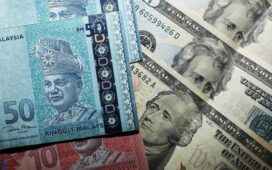STORY: The dollar on Thursday last week posted its biggest daily fall of 1.7% since November 2022.
That’s after President Donald Trump imposed tariffs on imports at levels not seen since the early 1900s.
For decades a safe bet, investors who’d normally rush to the dollar ran away from it instead.
They say it’s a sign that the greenback’s global standing may be eroding – but is this the case?
:: Is the dollar losing its appeal?
Some investors and analysts say Trump’s administration has been chipping away at the dollar’s appeal.
“We will impose a 25% tariff on all foreign made automobiles.”
They argue it’s due to Washington’s protectionist policies, to the upending of global economic order, and a growing U.S. debt pile.
Left unchecked, investors say, this lack of confidence in the dollar could undermine its position as the world’s reserve currency.
:: What happens if the dollar falls?
If the dollar falls it could result in higher interest rates for longer.
That’s because price pressures at home could make it harder for the Federal Reserve to cut rates.
Simultaneously, a rapid strengthening of currencies against the dollar is a headache for other central banks navigating a weaker economic outlook.
It makes their exports more expensive and potentially harder for them to revive growth.
:: What’s the alternative?
Despite such growing worries, the dollar is still firmly positioned as the world’s top reserve currency.
Trump has said he wants it to maintain that status and warned against attempts to undermine it.
The currency also has an inherent competitive advantage…
It’s backed by the world’s largest economy, the deepest capital markets and an established rule of law.
In the near term, there’s no real alternative.





